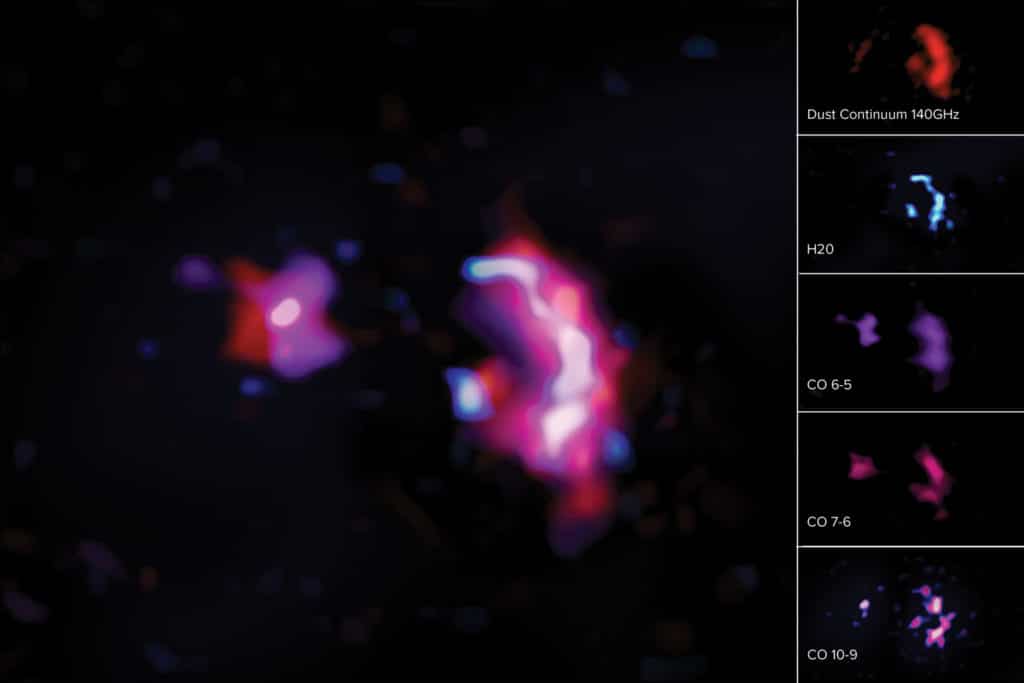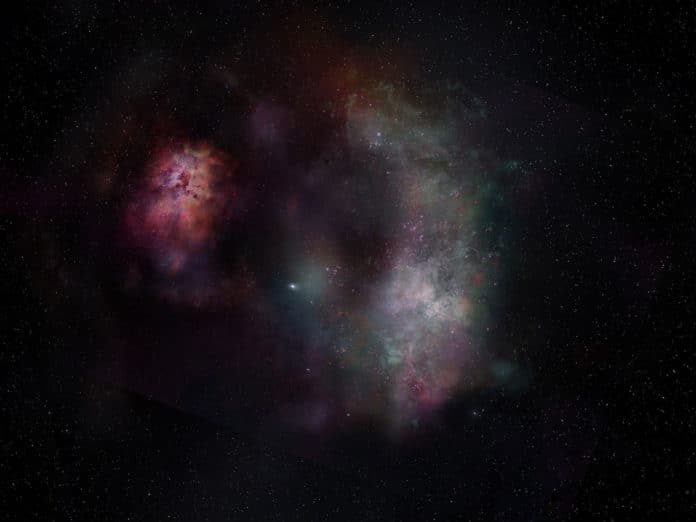Atacama Large Millimeter Array- ALMA has detected water in a distant galaxy in the early universe. The observations from ALMA revealed the signs of water and carbon monoxide in the galaxy in system SPT0311-58.
SPT0311-58 is made up of two galaxies. It was first detected by ALMA in 2017, at its location, or time, in the Epoch of Reionization. This epoch occurred when the universe was just 780 million years old—roughly 5-percent of its current age—and the first stars and galaxies were being born.
SPT0311-58 is located almost 12.88 billion light-years from Earth. The Discovery of these two molecules indicates that the molecular universe was going strong shortly after the elements were forged in early stars.
According to scientists, galaxies in SPT0311-58 may be merging. Also, their rapid star formation is not only using up their gas or star-forming fuel. Still, it may eventually evolve the pair into massive elliptical galaxies like those seen in the Local universe.
Sreevani Jarugula, an astronomer at the University of Illinois and the principal investigator on the new research, said, “Using high-resolution ALMA observations of molecular gas in the pair of galaxies known collectively as SPT0311-58, we detected both water and carbon monoxide molecules in the larger of the two galaxies. Oxygen and carbon, in particular, are first-generation elements, and in the molecular forms of carbon monoxide and water, they are critical to life as we know it.”

“This galaxy is the most massive galaxy currently known at high redshift, or the time when the universe was still very young. It has more gas and dust compared to other galaxies in the early universe, which gives us plenty of potential opportunities to observe abundant molecules and to understand better how these life-creating elements impacted the development of the early universe.”
“Water, in particular, is the third most abundant molecule in the universe after molecular hydrogen and carbon monoxide. Previous studies of galaxies in the local and the early universe have correlated water emission and the far-infrared emission from dust.”
“The dust absorbs the ultraviolet radiation from the stars in the galaxy and re-emits it as far-infrared photons. This further excites the water molecules, giving rise to the water emission that scientists can observe. In this case, it helped us to detect water emissions in this massive galaxy. This correlation could be used to develop water as a tracer of star formation, which could then be applied to galaxies on a cosmological scale.”
Credit: ALMA (ESO/NAOJ/NRAO)/S. Dagnello (NRAO)
“There’s plenty left to learn about SPT0311-58 and the galaxies of the early universe. This study not only provides answers about where, and how far away, water can exist in the universe but also has given rise to a big question: How has so much gas and dust assembled to form stars and galaxies so early in the universe? The answer requires further study of these and similar star-forming galaxies to understand better the structural formation and evolution of the early universe.”
Joe Pesce, astrophysicist and ALMA Program Director at the National Science Foundation, said, “This exciting result, which shows the power of ALMA, adds to a growing collection of observations of the early universe. These molecules, important to life on Earth, are forming as soon as they can, and their observation is giving us insight into the fundamental processes of a universe very much different from today’s.”
Journal Reference:
- Molecular Line Observations in Two Dusty Star-Forming Galaxies at z = 6.9. S. Jarugula et al. 2021. The Astrophysical Journal, pre-print: arXiv:2108.11319v1 [astro-ph.GA], arxiv.org/abs/2108.11319
